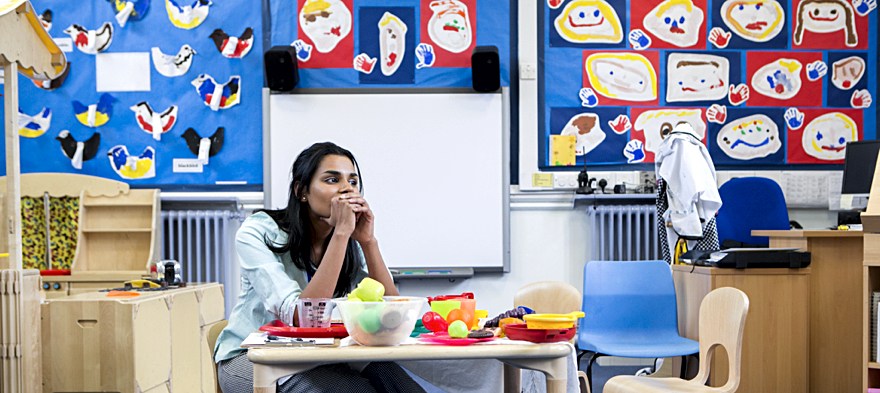
Oct 18, 2021 12:00:00 AM
Wednesday started out like any other; I left my house at 7:00 am to drive to my school campus, where I teach bilingual early childhood special education. Out of nowhere, I burst into tears. I thought to myself, I don’t know if I can do this anymore. Not just today. I don’t know if I can do this any day, ever again.
This is my 18th year as a classroom teacher. I have slogged through the grueling first month of pre-K 18 times, have had 18 rounds of “First Day of School” drawings, 18 Open Houses, and 18 Back-to-School nights. In all of those years, I have never lost my composure on the way to school. [pullquote]Teaching through the pandemic has left me feeling more than just “burnt out” — I am gutted, empty, and wondering how I can continue to be the joyful, engaged teacher that my students need.[/pullquote]
I am not alone. Every teacher I know is shell-shocked and exhausted. When the pandemic began, we were expected to have mastery of online teaching formats that were being developed as we used them. For months, we did everything we could to engage students through a screen. With the return of in-person learning this fall, we are spending our days navigating a system full of guidelines and safety precautions that are changing on a daily basis. I am working desperately to support children who have not interacted with society in the past one and a half years; my pre-K students have spent half of their lives in quarantine. And while students need more support than ever, we have fewer resources. If I am already feeling as if I have nothing left to give my students, how will I feel eight months from now?
Yes, teachers need to be resilient. But is the answer to tough times really just to ask teachers to get tougher? If we truly value public education, we need to examine the systems contributing to teacher burnout — and make systemic changes so teachers can thrive in the profession.
By asking teachers what they need, we’re not just supporting them, we’re supporting their students. We all want students to thrive this school year. It is up to all of us to provide the right support for the professionals who teach, inspire, and empower them every day
Megan Hillegass is a bilingual blended pre-K teacher at Dr. James Mitchem Early Childhood Center in Romeoville, Illinois. She is a Teach Plus Illinois Senior Policy Fellow.
Few issues in education spark more tension and debate than standardized testing. Are they a tool for equity or a burden on students? A necessary check on school systems or a flawed measure of...
Charter schools are public schools with a purpose. Operating independently from traditional school districts, they're tuition-free, open to all students, and publicly funded—but with more flexibility...
Despite the benefits of a diverse teaching force, prospective teachers of color fall out of our leaky preparation pipeline at every stage: preparation, hiring, induction, and retention. Here’s what...
Ed Post is the flagship website platform of brightbeam, a 501(c3) network of education activists and influencers demanding a better education and a brighter future for every child.
© 2020-2025 brightbeam. All rights reserved.
Leave a Comment